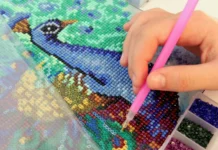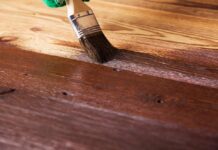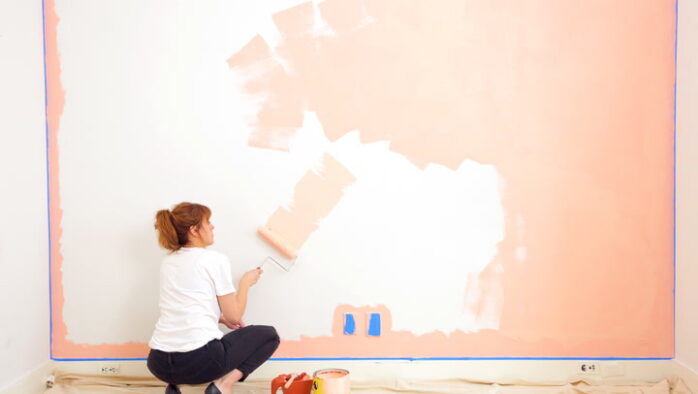
Painting a room. It’s a challenge we all have to face at some point. Whether it’s a new house, or an old room that has seen better days, a paint job is simply unavoidable. It seems simple at first, but in reality – so many things can go wrong. Like or it not, the success of your next painting project relies on the variety and quality of the tools you’re about to use. The sooner you understand and accept it, the better. This will help you get it right, even if you’re a complete beginner. Sometimes we can cut some corners here and there, but this isn’t one of those times. Don’t worry, it doesn’t mean you have to spend a fortune on accessories and tools alone. At the end of the day, you’re only going to use them when you need some touch-ups around the house. That’s why we decided to narrow everything down to the absolute essentials.
Paint Rollers
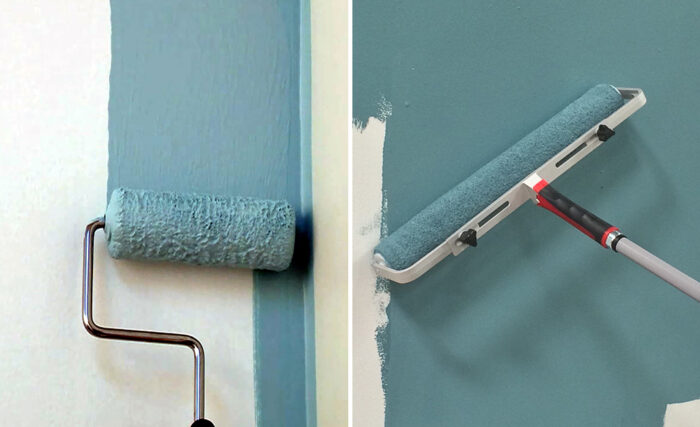
Let’s start with the most obvious accessory – paint rollers. They’re not essential for every project, but definitely for most of them. A paint roller covers more area than a traditional brush while offering greater control and more even distribution. Generally speaking, it’s also more beginner-friendly between the two. The first thing to consider is the size, of course. Unfortunately, there’s no perfect answer here – it depends on the surface and the type of project itself. Ideally, you’d get a whole set for more options. For walls and ceilings, it’s best to use the widest ones (230mm – 270 mm). Then, there’s a matter of picking the right nap or the fabric thickness. Thicker roller covers hold more paint and provide a rougher finish. When it comes to materials, there are definitely some options out there. For oil-based paints, a wool roller cover is a great choice, but the most versatile material is actually woven polyester. It’s suitable for pretty much any type of paint.
Paintbrush
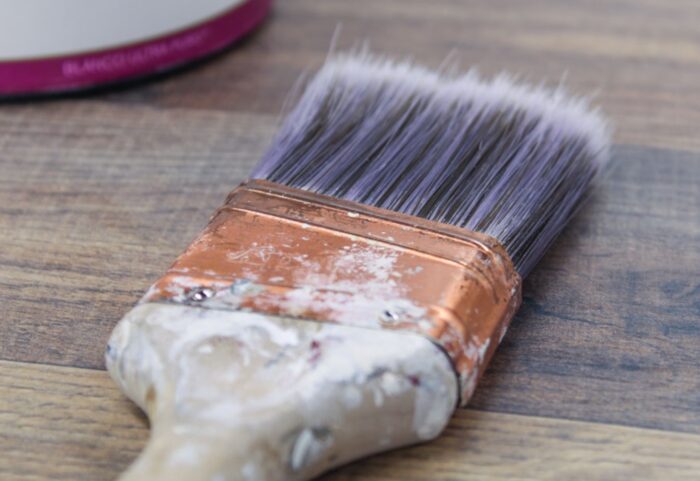
You want a perfect balance in your project – and a quality paintbrush will provide just that. It works best, where the paint roller fails. If you’re painting anything in your house for the first time, you’ll be surprised how many nooks and crannies it hides. These places and annoying little spots require a certain level of precision. That’s why you need a good paintbrush. As always, size depends on the areas you’re going to use it for. Again, in an ideal world, you’d have an entire set, but you can probably make do with just one. If you’re planning on using oil-based paint, then a natural-bristle brush should be your choice; for latex paints – just pick polyester ones. Since rollers will do most of the work, it’s generally recommended to get a brush for edging and trimming. Both of these are quite difficult and might take some practice, but with an angled model, it’s much easier to get a perfect straight line.
Sanding
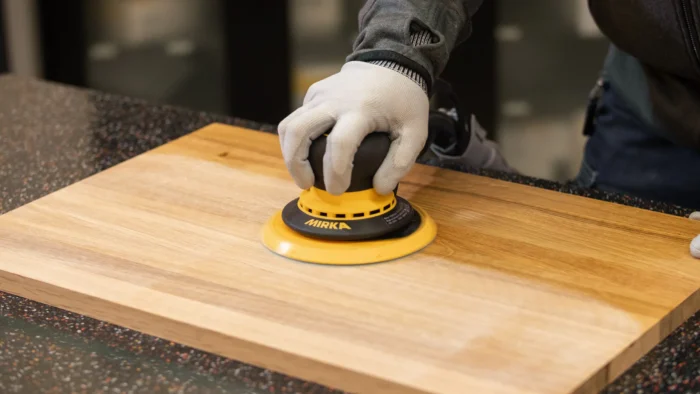
Yes – sanding is an integral part of any painting project around the house and beyond. That’s why sandpaper is simply a must. Walls, tiles, cabinets, wooden surfaces, and weatherboards. They all need to be properly cleaned. Why is it so important? It’s all about adhesion. Let’s put it this way – if you do a bad job in the prep phase and fail to remove all the flaky parts, the new coat of paint won’t have anything to cling on to. That, in turn, leads to various problems – from uneven finishes, cracking, blistering and yes, more flaking in the future. This isn’t a step you want to skip. Unlike other tools and accessories, this one is usually a lot cheaper, so you can easily get a set with different grit options. For oil-based paints, it’s best to sand the surface with a medium-grit block or pad. Finer grits will do best with water-based paints.
Paint Tray
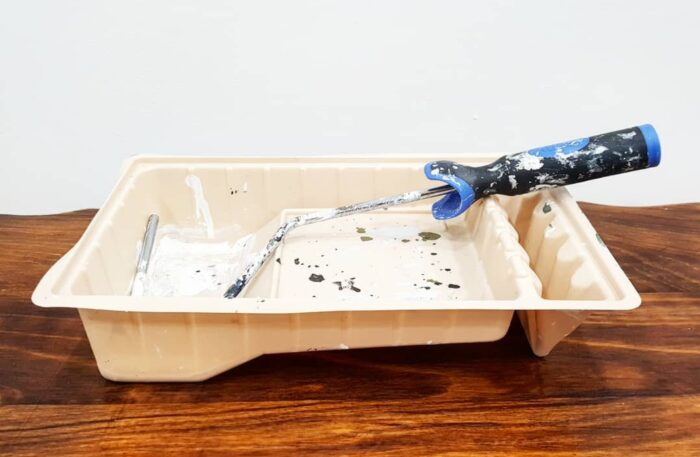
This one’s pretty self-explanatory. Technically, it’s an extra accessory to a paint roller. The idea here is to remove any excess paint by moving the roller back and forth, but it will do just fine with various types of brushes as well. You want to paint your walls without destroying everything around you, don’t you? Then you need a paint tray. Simple as that. In this case, there’s no need for fancy materials, a good ol’ plastic does an adequate job. Obviously, they’re less durable and break more easily. Alternatively, especially if you know you’re going to use it quite a bit, you could also get a metal tray with disposable inserts, which eliminates the need for constant cleaning or getting a new one every now and then.
Drop Cloth
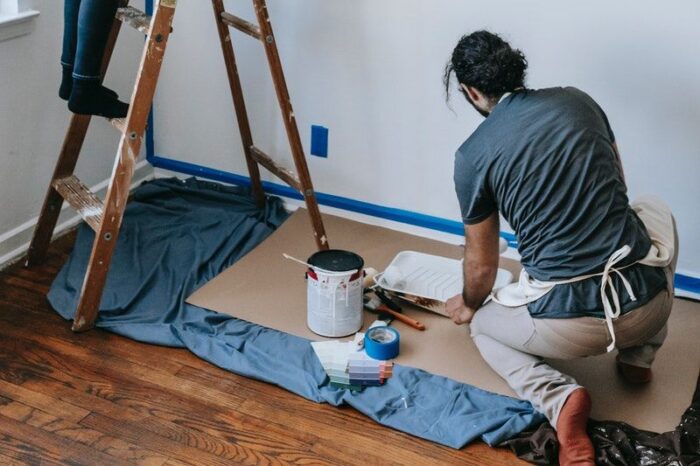
Another essential tool for the preparation phase. Painting is messy, whether we like it or not (and most of us don’t). But there’s no reason to make it worse than it has to be. And yes, covering every square inch of your house in protective film and drop cloths is not exactly a fun day in the office. But it’s all worth it. This way, your house is going to look brand new, and floors and furniture – remain intact. Canvas cloths are definitely more expensive, but also more durable and absorb paint much better. The alternative is a plastic cloth, which is lightweight and reusable. In reality, both can do just as good a job.
Proven Formula
It’s hard to find a perfect answer for every setting, especially with so many different variables. The following list is definitely not right for every single type of project – but it is for most of them. We hope you’ll find these simple tips helpful, doesn’t matter what you’re dealing with at the moment. Good luck with your next DIY challenge.
FAQs
-
How do I choose the right paint roller size?
- The size of the paint roller depends on the surface and type of project. For walls and ceilings, it’s best to use the widest ones (230mm – 270 mm).
-
What type of brush should I use for oil-based paint?
- A natural-bristle brush is recommended for oil-based paints.
-
Why is sanding important before painting?
- Sanding ensures proper adhesion of the paint. It removes flaky parts and prepares the surface for an even finish.
-
Can I reuse a plastic paint tray?
- Yes, plastic paint trays are reusable, but they may break more easily compared to metal trays with disposable inserts.
-
Which is better, canvas or plastic drop cloth?
- Canvas drop cloths are more durable and absorb paint better, but they are also more expensive. Plastic drop cloths are lightweight and reusable. Both can do a good job protecting your floors and furniture during painting.





